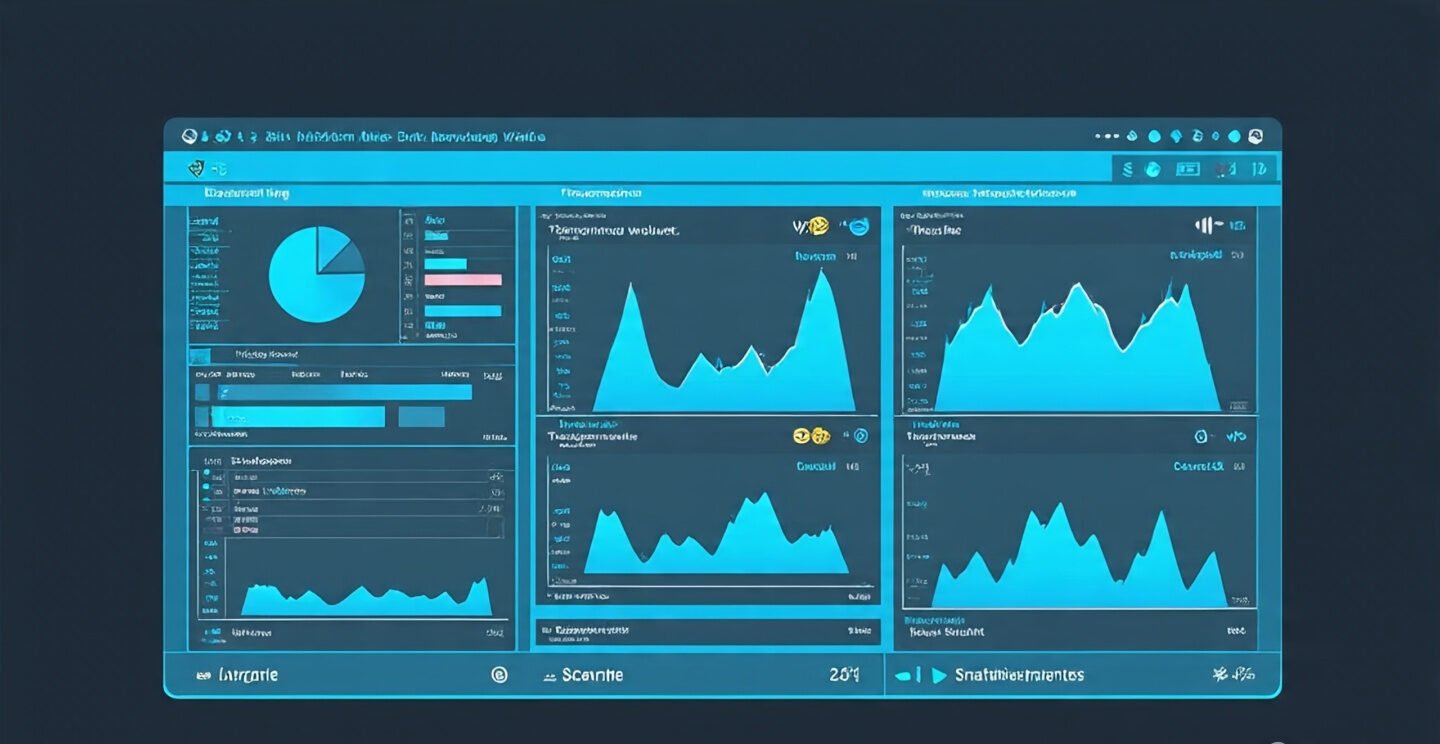In a shocking revelation that has sent ripples through Hong Kong’s cryptocurrency community, local authorities have successfully dismantled an illegal Bitcoin mining operation that was cunningly concealed within residential care facilities across the city. The sophisticated scheme, which involved the theft of approximately HK$9,000 worth of electricity, highlights the growing challenges law enforcement faces in combating cryptocurrency-related crimes in densely populated urban areas.
The Hong Kong Police Force’s Commercial Crime Bureau launched this investigation following suspicious electricity consumption patterns detected by utility companies. What initially appeared to be routine energy audits quickly escalated into a complex criminal investigation involving cryptocurrency fraud, electricity theft, and the exploitation of vulnerable care home infrastructure. This case represents a significant milestone in Hong Kong’s ongoing efforts to regulate digital currency mining activities while protecting legitimate businesses and residents from fraudulent schemes.
The operation’s discovery has raised serious questions about the security protocols in place at care facilities and the need for enhanced monitoring systems to prevent similar incidents. As Bitcoin Mining continues to require substantial electrical power, criminals are increasingly seeking creative ways to offset their operational costs, often at the expense of unsuspecting victims and legitimate businesses.
The Discovery: How Authorities Uncovered the Bitcoin Mining Scheme
Initial Investigation Triggers
The investigation began when Hong Kong Electric Company Limited (HKE) and China Light & Power (CLP) reported unusual electricity consumption patterns at several care homes across different districts. These facilities, which typically maintain predictable energy usage profiles, suddenly showed dramatic spikes in power consumption that standard operational requirements couldn’t explain.
Digital forensics experts were called in to examine the anomalous data, revealing that the electricity usage patterns coincided with peak cryptocurrency mining hours. The sophisticated nature of the operation suggested that the perpetrators possessed extensive knowledge of both electrical systems and blockchain technology.
Police Response and Investigation Methods
The Hong Kong Police Force’s Cyber Security and Technology Crime Bureau collaborated with the Commercial Crime Bureau to conduct a comprehensive investigation. Officers employed advanced surveillance techniques, including thermal imaging cameras, to identify locations with unusual heat signatures typical of mining hardware operations.
Cryptocurrency investigators utilized blockchain analysis tools to trace digital wallet addresses and mining pool connections, building a comprehensive picture of the illegal operation’s scope and profitability. The investigation revealed that the criminals had been operating for several months, systematically targeting care homes with older electrical infrastructure that made detection more difficult.
The Mechanics of the Illegal Bitcoin Mining Operation
How the Scheme Operated
The criminals behind this Bitcoin mining fraud employed a sophisticated approach that involved gaining unauthorized access to care home facilities during off-peak hours. They strategically installed ASIC miners and other cryptocurrency mining equipment in utility rooms, basements, and unused storage areas where the additional noise and heat would be less likely to attract attention.
Cryptocurrency mining equipment was carefully concealed behind existing infrastructure, with power cables routed through existing conduits to avoid detection. The perpetrators demonstrated remarkable technical expertise, modifying electrical panels to accommodate the additional power draw while attempting to mask the theft from utility monitoring systems.
Technical Aspects of the Mining Setup
The illegal mining farm consisted of multiple high-performance mining rigs designed explicitly for Bitcoin hash rate optimization. Each unit was capable of consuming between 1,500 and 3,000 watts of electricity, explaining the dramatic increase in power consumption that initially alerted utility companies.
Cryptocurrency hardware was strategically distributed across multiple locations to minimize the risk of detection and reduce the electrical load at any single facility. The criminals employed cooling systems and ventilation modifications to manage the substantial heat generated by the mining equipment, further demonstrating their technical sophistication.
Impact on Care Homes and Residents
Financial Consequences for Care Facilities
The electricity theft had immediate financial implications for the affected care homes, with facilities facing unexpected utility bills that strained their operational budgets. Many care homes operate on tight financial margins, making the additional electricity costs particularly burdensome for these essential community services.
Care home administrators reported concerns about the potential impact on resident services, as unexpected expenses could affect staffing levels, meal quality, and essential maintenance programs. The incident has prompted calls for enhanced security measures and regular audits of electrical systems in residential care facilities.
Security and Safety Concerns
The unauthorized installation of cryptocurrency mining equipment raised serious safety concerns, particularly regarding fire hazards and electrical overloads. Mining equipment generates substantial heat and places significant demands on electrical systems that were not designed to handle such loads.
Fire safety experts have expressed concerns about the potential for electrical fires, particularly in facilities housing vulnerable residents who may have limited mobility. The incident has highlighted the need for enhanced security protocols and regular inspections to prevent similar unauthorized installations from occurring in the future.
Legal Ramifications and Charges
Criminal Charges Filed
The Hong Kong authorities have filed multiple charges against the perpetrators, including electricity theft, burglary, criminal damage, and fraud. The case represents one of the most significant cryptocurrency crime prosecutions in Hong Kong’s legal history, potentially setting important precedents for future cases.
Legal experts suggest that the charges could result in substantial prison sentences and financial penalties, particularly given the systematic nature of the operation and the vulnerability of the targeted facilities. The case has also prompted discussions about the need for updated legislation specifically addressing cryptocurrency-related crimes.
Regulatory Implications
This incident has accelerated discussions about cryptocurrency regulation in Hong Kong, with regulators considering enhanced oversight of mining activities and stricter penalties for related crimes. The Securities and Futures Commission (SFC) has indicated that it will review current guidelines for digital asset activities.
Regulatory compliance requirements may be strengthened to include mandatory reporting of significant increases in large-scale electricity consumption and enhanced background checks for individuals seeking access to critical infrastructure facilities.
Prevention Measures and Industry Response
Enhanced Security Protocols
In response to this incident, care home security protocols are being revised to include regular electrical system audits, enhanced access controls, and staff training programs focused on identifying suspicious activities. Many facilities are implementing advanced monitoring systems to track electricity consumption in real-time.
Cryptocurrency security experts recommend that care facilities invest in comprehensive security assessments and establish partnerships with local law enforcement to prevent similar incidents. The development of industry-specific security guidelines is currently underway.
Technology Solutions
 Blockchain monitoring tools and advanced analytics platforms are being deployed to help identify suspicious mining activities and trace cryptocurrency transactions. These technological solutions represent a significant advancement in the fight against cryptocurrency-related crimes.
Blockchain monitoring tools and advanced analytics platforms are being deployed to help identify suspicious mining activities and trace cryptocurrency transactions. These technological solutions represent a significant advancement in the fight against cryptocurrency-related crimes.
Innovative grid technology is being implemented to provide utility companies with enhanced capabilities for detecting unusual consumption patterns and alerting authorities to potential illegal activities more quickly than traditional monitoring systems.
The Broader Context of Cryptocurrency Crime in Hong Kong
Rising Trends in Digital Currency Fraud
The Bitcoin mining theft case reflects broader trends in cryptocurrency-related crimes across Hong Kong and the Asia-Pacific region. As digital currencies become more mainstream, criminals are developing increasingly sophisticated methods to exploit system vulnerabilities and legitimate infrastructure.
Cryptocurrency fraud statistics show a significant increase in cases involving electricity theft, unauthorized mining operations, and investment scams. Law enforcement agencies are adapting their investigative techniques to address these emerging challenges.
International Cooperation Efforts
Hong Kong authorities are strengthening cooperation with international partners to combat cross-border cryptocurrency crimes. The global nature of digital currencies necessitates coordinated efforts among multiple jurisdictions to investigate and prosecute offenders effectively.
International cryptocurrency enforcement initiatives are being developed to share intelligence, best practices, and technical resources among law enforcement agencies worldwide. These collaborative efforts are crucial for addressing the growing complexity of cryptocurrency-related crimes.
Future Implications and Industry Outlook
 Impact on Legitimate Mining Operations
Impact on Legitimate Mining Operations
The crackdown on illegal Bitcoin mining activities may have implications for legitimate cryptocurrency businesses operating in Hong Kong. Regulatory scrutiny is likely to increase, with enhanced compliance requirements and more frequent inspections of mining facilities.
Legitimate cryptocurrency miners are being encouraged to work closely with authorities to demonstrate compliance with all applicable regulations and to help identify and report suspicious activities within the industry.
Technological Advancements in Detection
Advanced cryptocurrency detection technology is being developed to help identify illegal mining operations more quickly and accurately. These systems utilize artificial intelligence and machine learning algorithms to analyze consumption patterns and identify anomalies.
Blockchain analytics platforms are becoming increasingly sophisticated, providing law enforcement agencies with powerful tools for tracking digital currency transactions and identifying criminal networks involved in cryptocurrency-related crimes.
Conclusion
The successful bust of the illegal Bitcoin mining operation in Hong Kong care homes represents a significant victory for law enforcement and highlights the ongoing challenges associated with regulating cryptocurrency activities. The case demonstrates the importance of collaboration between utility companies, law enforcement agencies, and private sector stakeholders in combating sophisticated criminal schemes.
As the cryptocurrency industry continues to evolve, regulatory frameworks and enforcement capabilities must keep pace with emerging threats. The Hong Kong authorities’ swift action in this case sends a clear message that cryptocurrency-related crimes will be vigorously prosecuted, while also highlighting the need for continued vigilance and enhanced security measures across all sectors.
The incident serves as a crucial reminder that the benefits of digital currencies must be balanced against the potential for criminal exploitation. Through continued cooperation between stakeholders and the implementation of robust security measures, Hong Kong can maintain its position as a leading financial center while effectively combating cryptocurrency-related crimes.

